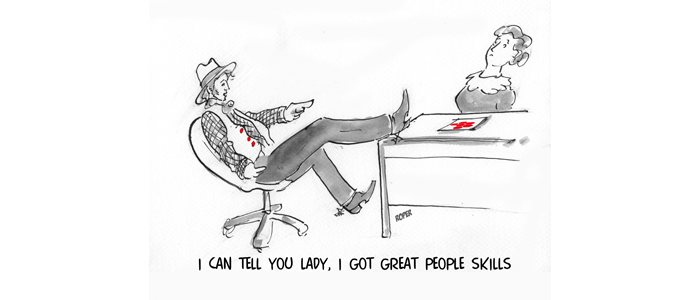Every organisation has its own unique culture. This can seem obvious to outsiders, but for those working in the organisation it can often feel invisible. Imagine a goldfish that’s swimming around in water that has no idea it’s swimming around in water.
The culture of an organisation shows up in the way people behave with each other and react to situations. It manifests itself in the ‘unwritten rules’ of what is and what is not acceptable, the myths and stories that people tell and the organisation’s values, that are probably quite different from the ones you’ll see on a laminated poster up in Reception.
A healthy culture will support a flourishing business, while an unhealthy culture can pull a business down and will have a detrimental impact on the bottom line.
For this reason alone it is important as a leader of an organisation to have a handle on where your culture currently is, and where you would like it to be.
The trouble is that too often this feels like the ‘fluffy’ stuff when you could be focusing on sales targets and the bottom line. For a lot of our clients it feels like both a black art and a black hole, although deep down they know it is something they should address.
As organisation specialists we’ve seen the whole spectrum of cultures. From those places where it’s ‘everyman for himself’ and ‘you eat what you kill’ to organisations where no-one is ever put on performance management and there seems to be a suspiciously high ratio of boxes of Kleenex.
These are, of course, slightly tongue in cheek extremes, but as we work more with professional services than with the creative industry or charities, we do see many more situations where people would far rather skate over the ‘difficult’ conversations, because they are worried they will become confrontational or emotional. But if, as a leader, this is what you do then you are missing a trick.
You are also missing a key distinction about the management tools that you could deploy when you manage the culture and the people in your organisation.
If you consider the ‘skills’ you use in your life they arguably fall into three distinct categories:-
- Technical
- Professional Working Skills
- Social Skills
Your technical skills are what you ‘do’. So you could be selling financial advice, or commercial real estate or ‘widgets’.
Your social skills are the skills you deploy to ‘get on with people’ both professionally and personally. So for example dinners with friends and colleagues, networking drinks and taking the team out for a pizza on a Friday night are in effect all social.
It’s the professional working skills that are too often missing and can be misconstrued as the ‘black art’. It’s very easy to fall into the trap of trying to solve a professional working issue with a solution that’s from the social part of the continuum. Are you worried about a salesman who’s throwing his toys out of the pram? Take him out for lunch. Are you frustrated that the team aren’t sharing information and cross-referring? Organise a paintballing day for them.
You don’t need to have a great social relationship with someone in order to work really well with him or her. Indeed, it often gets in the way. What you need (as do they) is an understanding of a rigorous set of professional working skills.
These include, for example, a set of common Groundrules for how you conduct meetings in your organisation, how you hold people to account without it becoming threatening or emotional, how you give structured feedback whether it’s positive or otherwise, how you listen properly, how you make ‘clear’ requests and how you delegate effectively.
Develop a culture in your organisation where everyone has explicit professional working skills, a common language and an understanding that ‘this is how we do it round here’. You will find the ‘fluffy’ stuff is not only structured and rigorous but most importantly can be effectively measured. And it will impact your bottom line.

